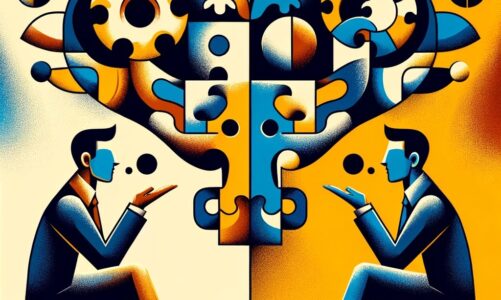The essay discusses the exceptional thinking style of one of the most significant artists and inventors in human history, Leonardo da Vinci, shedding light on the intellectual world of this renowned figure.
The book How to Think Like Leonardo da Vinci by Michael J. Gelb reveals da Vinci’s extraordinary thinking style by showcasing his marvelous abilities and how he achieved superior performance in art, science, and engineering. The book discusses seven principles reflecting da Vinci’s reflective method, typical of the Italian genius.
Curiosity
At the core of da Vinci’s genius lies an insatiable curiosity about the world and life. His desire to explore objects and events and his love for knowledge are almost boundless. The principle of curiosity encourages individuals to ask questions, acquire new experiences, and be open and attentive to the beauty displayed in the universe, the divine artworks. Those who nurture the feeling of curiosity can constantly expand their horizons and perceive truths manifesting in life more profoundly. Making an effort to learn continuously without falling into laxity is an essential principle for human excellence in worldly life.
Experience
Da Vinci believes that learning through experience and observation is more important than relying solely on theoretical knowledge. This principle emphasizes gaining experience, conducting experiments, and regarding mistakes as learning opportunities. Individuals who intervene in and apply what they know to objects and events can reach an insight. Being prepared to test existing knowledge through experience and verification and to learn from mistakes is essential for free thinking and lifelong learning.
Sensibility
The Italian painter, inventor, and engineer stress the importance of sharpening our senses to truly understand the world. This principle encourages enhancing the ability to capture the essence of images, sounds, tastes, textures, and smells by increasing awareness of the senses. Being more attentive to sensations can improve observational skills and help discover new relationships. Saper vedere (knowing how to see) was one of da Vinci’s concise expressions and a cornerstone of his magnificent works.
Tolerating Uncertainty
This principle encourages patience in ambiguous matters. da Vinci’s mastery in bringing light and shadow together in his works shows his belief in the dynamic structure of interdisciplinary boundaries. This principle can lead to developing a holistic approach to problems and combining seemingly unrelated concepts to think innovatively.
Art and Science
The Italian polymath succeeded in merging art with science. For him, these two approaches are complementary and not contradictory. This principle encourages combining aesthetic studies with scientific precision, allowing people to approach subjects from different perspectives. By merging aesthetics and logic, they can reach innovative solutions that encompass both form and function.
Body and Mind
Leonardo da Vinci is aware of the connection between the mind and body. This heading emphasizes the importance of maintaining physical health by paying attention to exercise, balanced nutrition, and sleep. Individuals with good physical health are more prepared for better mental functioning.
Da Vinci effortlessly used both of his hands in tasks that required skill. He could bend a horseshoe with his right hand and stop a running horse by grabbing its reins.
Connection
At the core of da Vinci’s life philosophy is a belief that everything in the universe is interconnected. This principle encourages people to realize that everything is interconnected and to become conscious of the unity within diversity. Individuals who understand the relationships between different realities can develop a more comprehensive and empathetic perspective, enabling them to take more rational and effective actions.
By applying these principles in his life, the Italian genius not only produced a masterpiece like the Mona Lisa but also earned the title of a Renaissance polymath with his drawings, notebooks, studies in anatomy and physiology, and inventions in the field of engineering.
How to Think Like Leonardo da Vinci is an intriguing journey into the mind of a Renaissance genius. The principles discussed in the book offer important criteria to enhance our extraordinary thinking abilities, broaden our vision, and view life from different perspectives. Adhering to these principles, which are in line with the laws of creation, can contribute to the development of some of our abilities.
Here are some questions for planning life by taking inspiration from Da Vinci:
People: Which relationships do I value the most? What should I pay attention to in my relationships?
Career: What should my profession be that aligns with my nature?
Finances: What kind of resources do I need to achieve my goals and priorities?
Home: What should my ideal living environment be like?
Possessions: Which possessions do I value?
Spirituality: What is my relationship with God like? How can I develop a sense of servitude?
Health: What kind of physical, mental, and spiritual health do I desire?
Rest: What things give me the most comfort and peace?
Service: What kinds of services do I dream of providing to others?
Travel: Where do I plan to go?
Learning: What would I learn if I could learn everything I wanted?
Personality: What kind of person do I want to be? Which character traits do I intend to develop?
Two other maxims of Leonardo da Vinci are as follows:
“He who possesses most fears loss.”
“Amor vincit omnia.” (Love conquers all.)
Source: Michael J. Gelb, How to Think like Leonardo da Vinci, New York: Dell, 1998.




